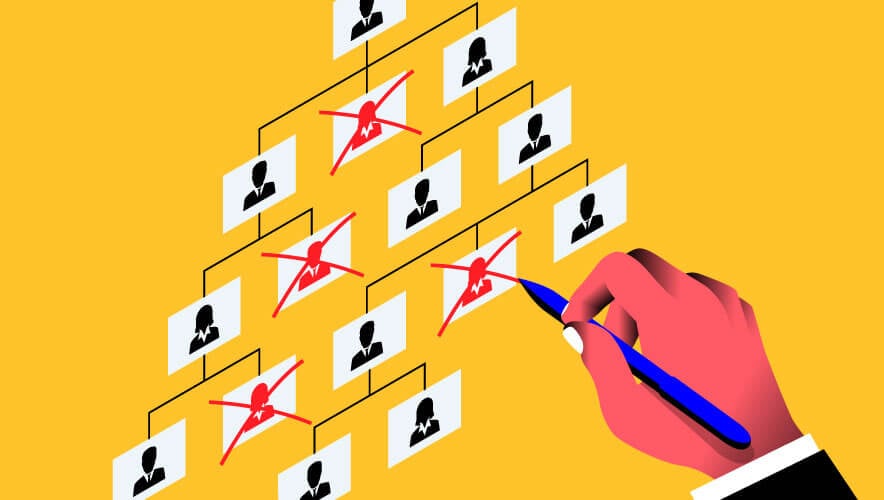Preventing Workplace Violence: A Company’s Duty in Challenging Times
As inflation and supply chain issues persist, external economic tailwinds are putting pressure on companies, resulting in layoffs at workplaces still strained by the COVID-19 pandemic and ever-changing social media and politics. Yet, even with workplace violence rising, nearly half of U.S. employers report that they are unprepared to prevent and respond to incidents. Because leadership works for the well-being of all team members, whether those being let go or staying on, they are often left navigating delicate and complex situations without sufficient guidance. But safety isn’t a perk, it’s a necessity.
There are three key steps companies can—and should—take to protect their teams: prioritization, preparation, and execution.
Prioritization
A holistic approach to combating workplace violence begins by prioritizing safety through clear communication and expectation setting. Workplace violence often stems from misaligned or mismanaged expectations. Setting clear expectations around success, severance and benefits during the hiring process provides transparency for both employers and employees.
Humans are emotional creatures. When the employee and the company aren’t aligned, emotions can run high, and lawsuits are more likely. If an employee feels they are not being treated fairly, it can start them down a dangerous path. To prevent potential disagreements, set aside time to walk through the company handbook with new employees, outlining the firm’s requirements to them and their requirements to the firm from the start.
After expectations are set, stay proactive in identifying and addressing issues early on. If you see indicators of erratic behavior or conflict from an employee—such as verbal threats, excessive complaining, or sudden outbursts—try to de-escalate the situation quickly. That often means requesting meetings at a more informal level or, if that fails, requesting remediation with an HR professional.
If the concern is a workplace issue, transferring the employee to a different team can eliminate friction between personnel and offer the opportunity to apply the individual’s skills to a new environment. By framing the transition as a new beginning, employers can proactively resolve interpersonal conflicts and cultivate a more cooperative and productive workplace.
If it’s a personal issue—drugs, alcohol, domestic problems—look for ways the company can help them get back on their feet. Does your insurance offer coverage for a counselor, family professional, or money management expert? What space do you need to give them? If we can treat, help, or assist someone in getting to a better spot in their personal life, we will help them become better employees as well.
The best preventive measures are ultimately about human interaction—employees understanding their peers, managers knowing their personnel, or a coworker taking 10 minutes every day to connect. There’s no one answer, magic button, or single survey you can fill out to solve the problem for good. It’s about consistently paying attention to your employees.
Preparation
Distressed employees can act out against their former employers after layoffs. Companies must ask themselves: If preventive methods aren’t working, are we prepared for violence in the workplace from a physical, training, and insurance standpoint? Do employees know what to do if there’s an active shooter or who to talk to if they see concerning behavior?
Ensuring employee preparedness and awareness is essential. It’s not uncommon for employees to try to empathize with a disgruntled coworker, only to wish months later that they had reported their behavior before it became dangerous. By educating your team early and properly, you can prevent dangerous situations from going unnoticed until it’s too late.
Consider implementing classes, seminars, or internal communications to teach employees about your company’s safety policies and plans. Make sure they know where to go in case of an emergency and who to communicate with about any concerns.
If a team member or manager flags an employee as high-risk, begin monitoring their online activity for warning signs including (but not limited to) targeting coworkers and leadership, erratic behavior, and searches associated with violence. If the organization doesn’t have the function internally, bringing on a team of analysts who can flag and compile relevant information is integral to better understanding the individual’s risk level and intentions.
Finally, consider bringing in third-party security professionals. Outside agents can help company leadership establish robust preventative measures, strategize an effective emergency response, and develop a communications plan with employees. Establishing a physical presence of security in your workplace is vital before conducting layoffs. It’s important for people to know that there are precautions in place to prevent any escalation or conflict and to provide an additional sense of safety for all your team members. Security professionals are key to discouraging, identifying, and addressing threats before they become tragedies.
Execution
If you have to let an employee go, you can minimize the threat of emotional reactions by clearly communicating your adherence to previously agreed-upon guidelines. Severance pay and insurance benefits are two of the most inflammatory topics during layoffs. Avoid creating feelings of unfair treatment or instability, which can become emotional flashpoints, by clearly and carefully laying out their severance package. Strong, personal communication is vital to a smooth transition.
Continue your monitoring and security measures for up to eight weeks after layoffs. Most violence occurs during emotional highs in the following days or weeks before individuals have shifted to more hopeful news. Some employees may leave quietly, then emotionally disconnect from their teams and return ready for violence. Analysts and agents can spot these threats early on before they have time to cause damage.
Some industries, such as healthcare or insurance, are at especially high risk of violence from angry patients or customers who are upset about not receiving the insurance payment they were expecting.
When a customer of a global insurance company wasn’t provided an insurance payment on a claim that he filed, he made direct threats against the senior executive and the entire corporate headquarters staff. The insurance firm hired Global Guardian (the author’s firm), and monitoring analysts found that the customer was traveling to their headquarters. They immediately disseminated his picture and placed armed agents at the executive’s residence and headquarters. When the customer arrived at the office, agents quickly spotted him and called the police. The individual was arrested for illegally carrying a firearm before he was able to harm the executive or anyone else. Their quick action saved lives that day.
Feeling safe at work is linked to lower turnover, higher engagement, and increased productivity. By proactively instituting clear policies and taking strong preventative measures, you can protect your employees and your company while having a positive impact on overall company culture and success.
Dale Buckner is the CEO of Global Guardian, a McClean, Virginia, based global security firm that provides its clients with access to a comprehensive suite of duty of care services.













